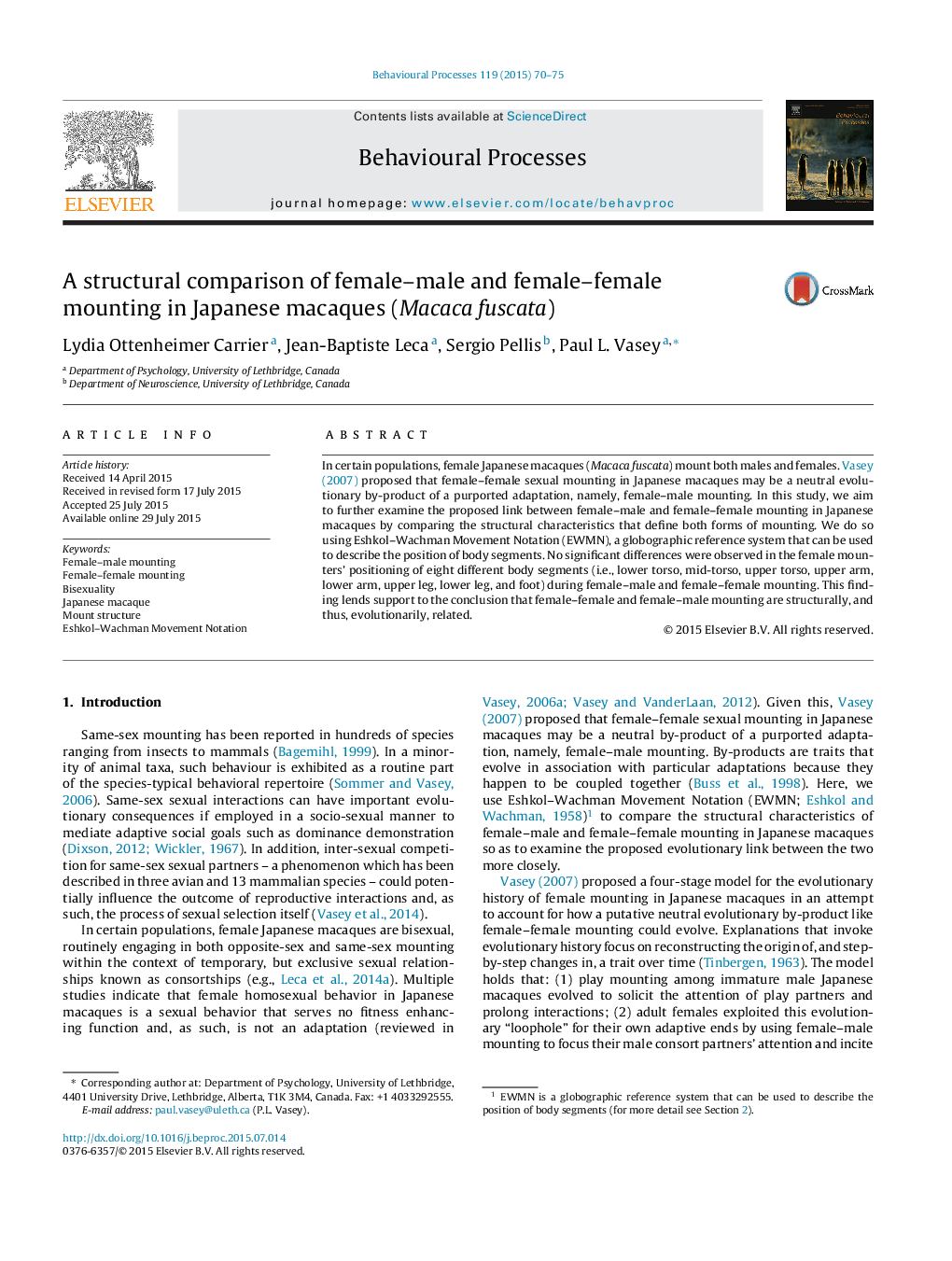| Article ID | Journal | Published Year | Pages | File Type |
|---|---|---|---|---|
| 2426520 | Behavioural Processes | 2015 | 6 Pages |
•The structure of female mounting in Japanese macaques was studied.•Eshkol–Wachman Movement Notation was used to analyse mount structure.•Female–female and female–male mounting are structurally and evolutionarily related.
In certain populations, female Japanese macaques (Macaca fuscata) mount both males and females. Vasey (2007) proposed that female–female sexual mounting in Japanese macaques may be a neutral evolutionary by-product of a purported adaptation, namely, female–male mounting. In this study, we aim to further examine the proposed link between female–male and female–female mounting in Japanese macaques by comparing the structural characteristics that define both forms of mounting. We do so using Eshkol–Wachman Movement Notation (EWMN), a globographic reference system that can be used to describe the position of body segments. No significant differences were observed in the female mounters' positioning of eight different body segments (i.e., lower torso, mid-torso, upper torso, upper arm, lower arm, upper leg, lower leg, and foot) during female–male and female–female mounting. This finding lends support to the conclusion that female–female and female–male mounting are structurally, and thus, evolutionarily, related.
